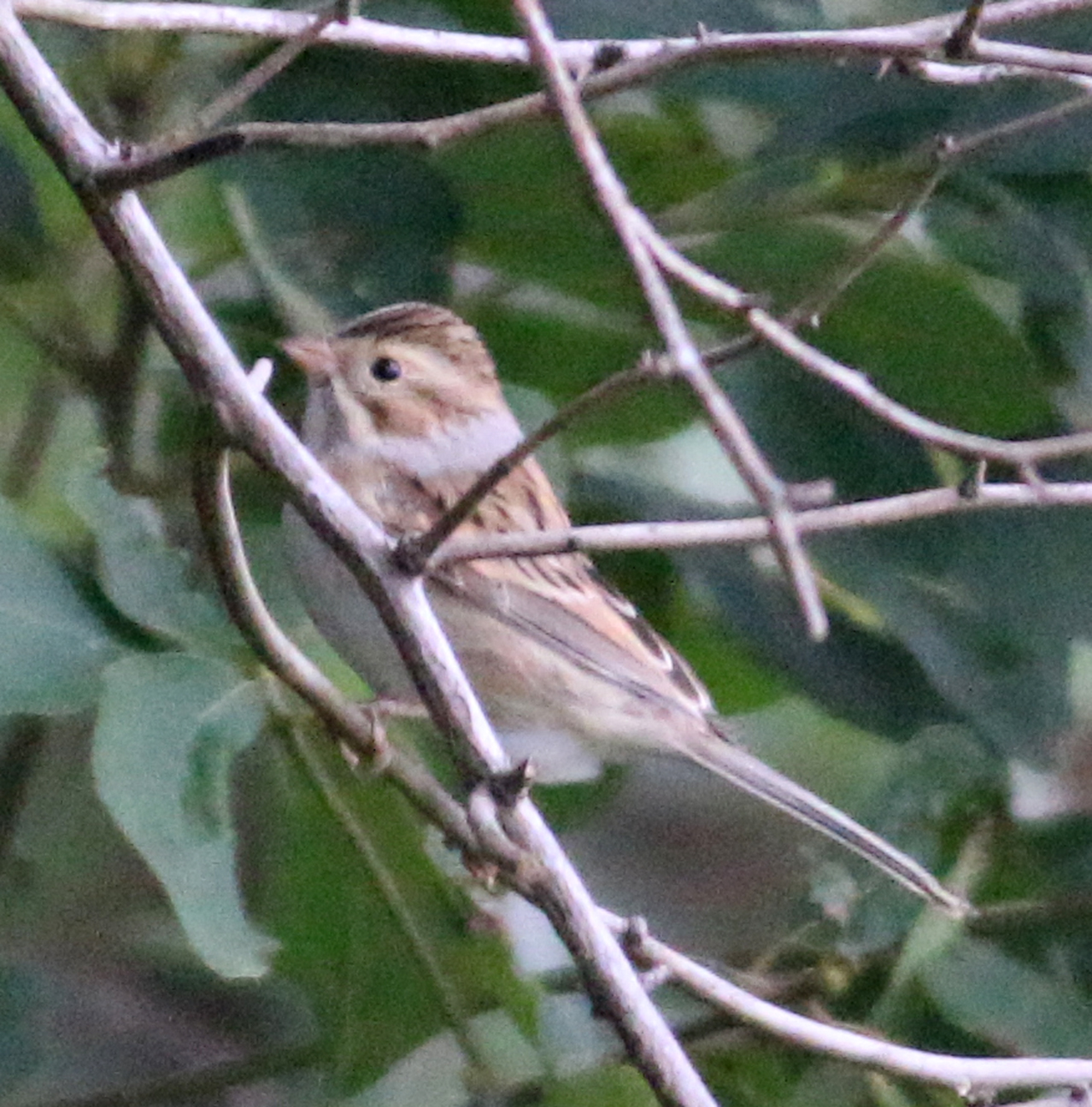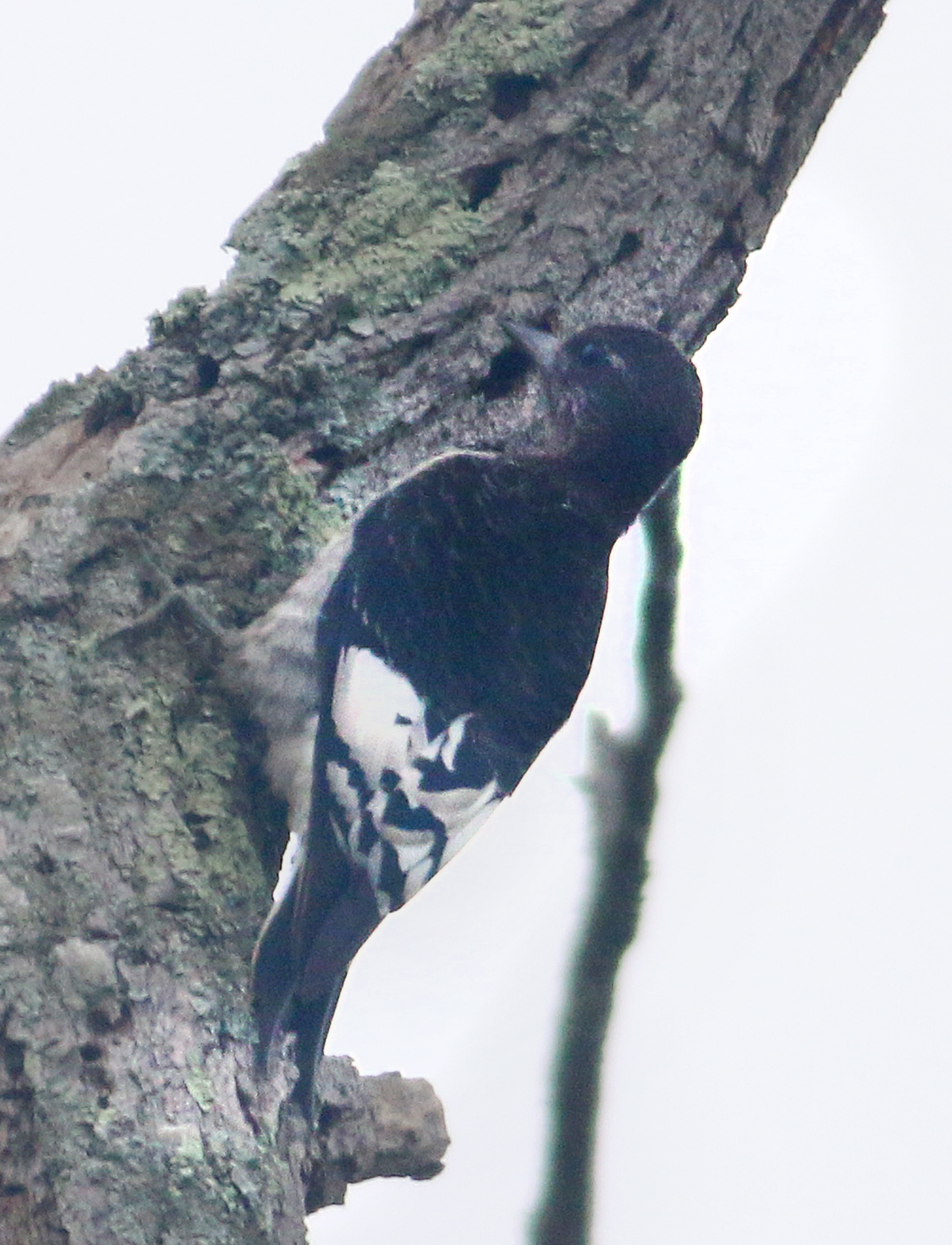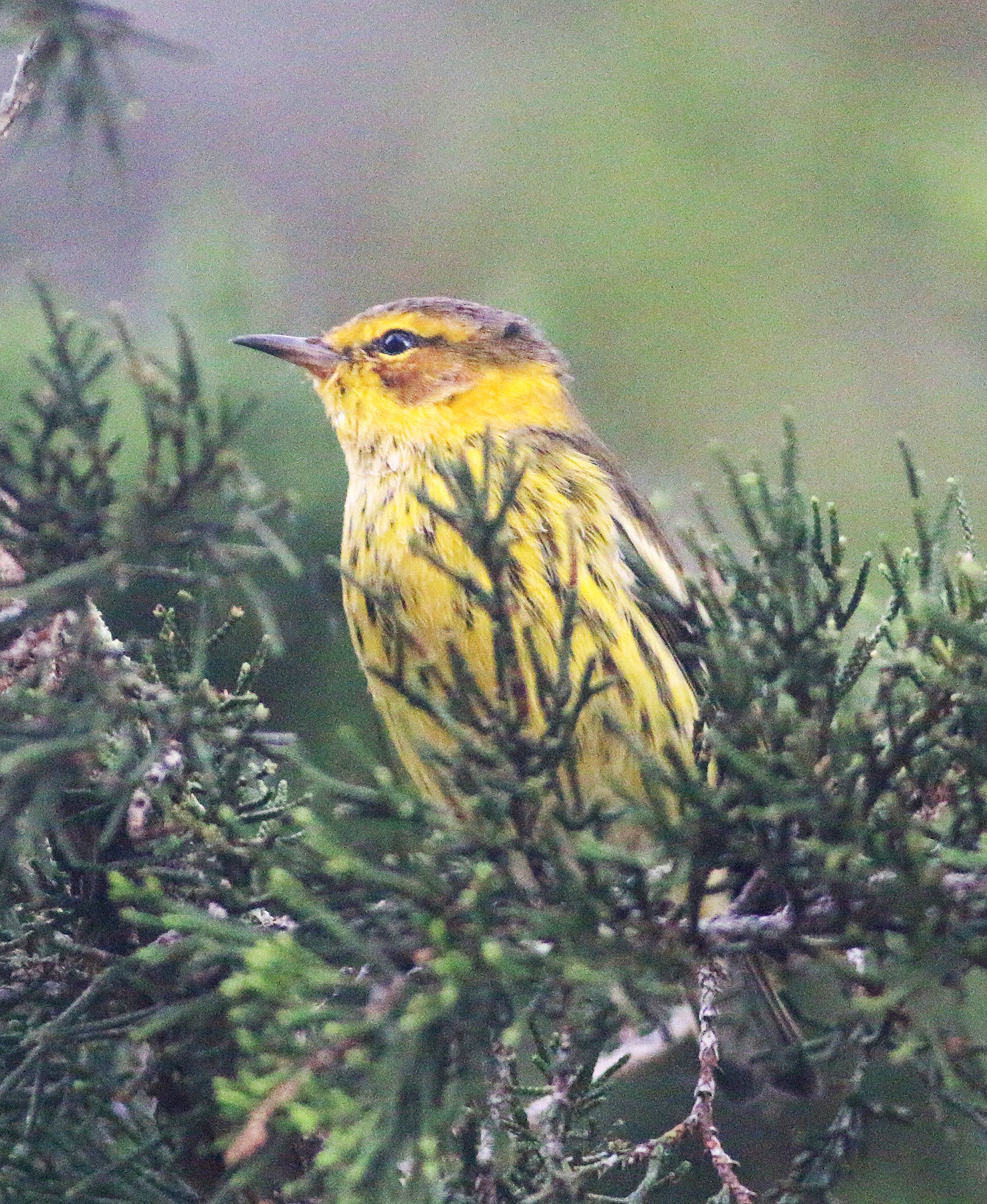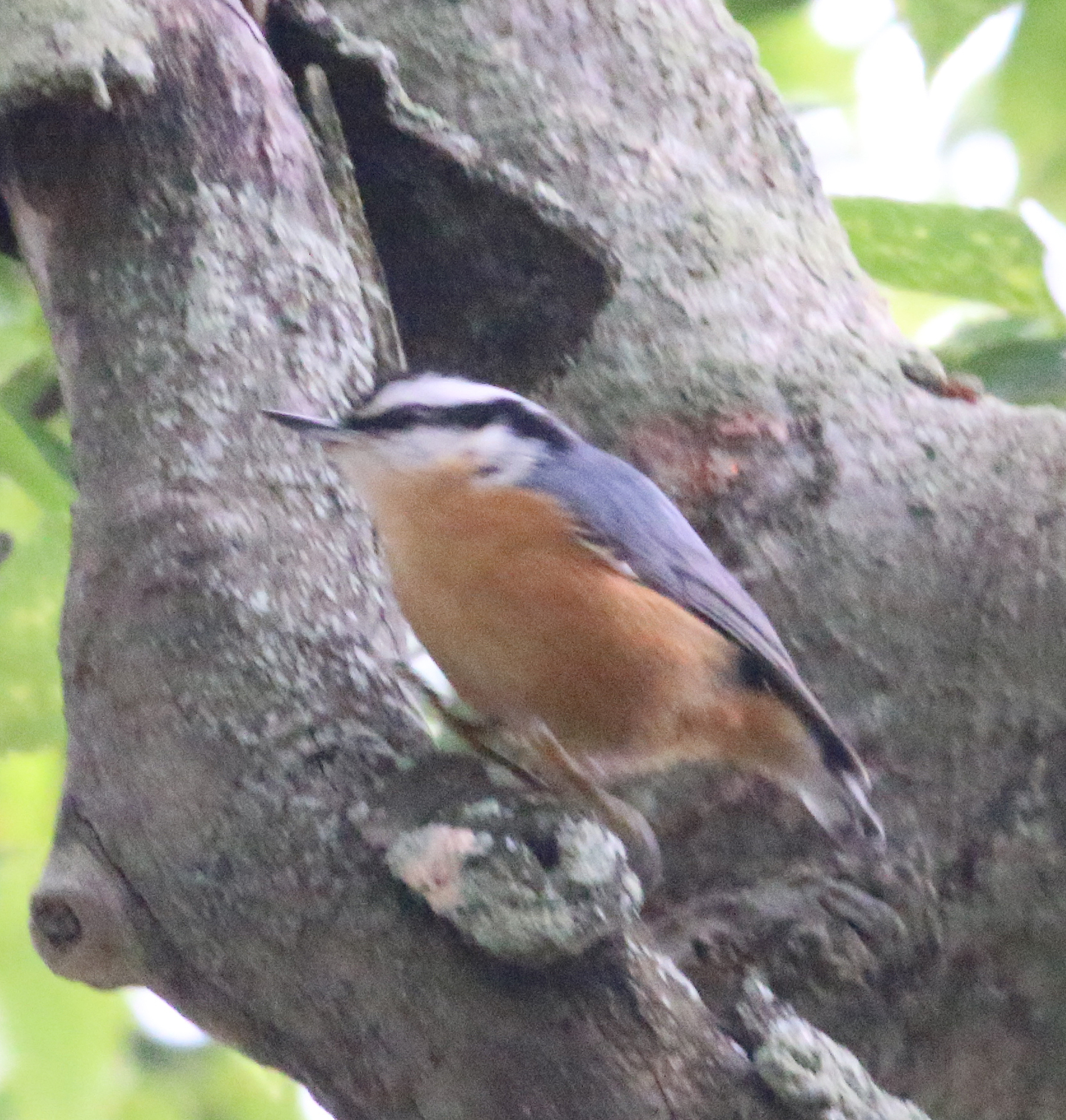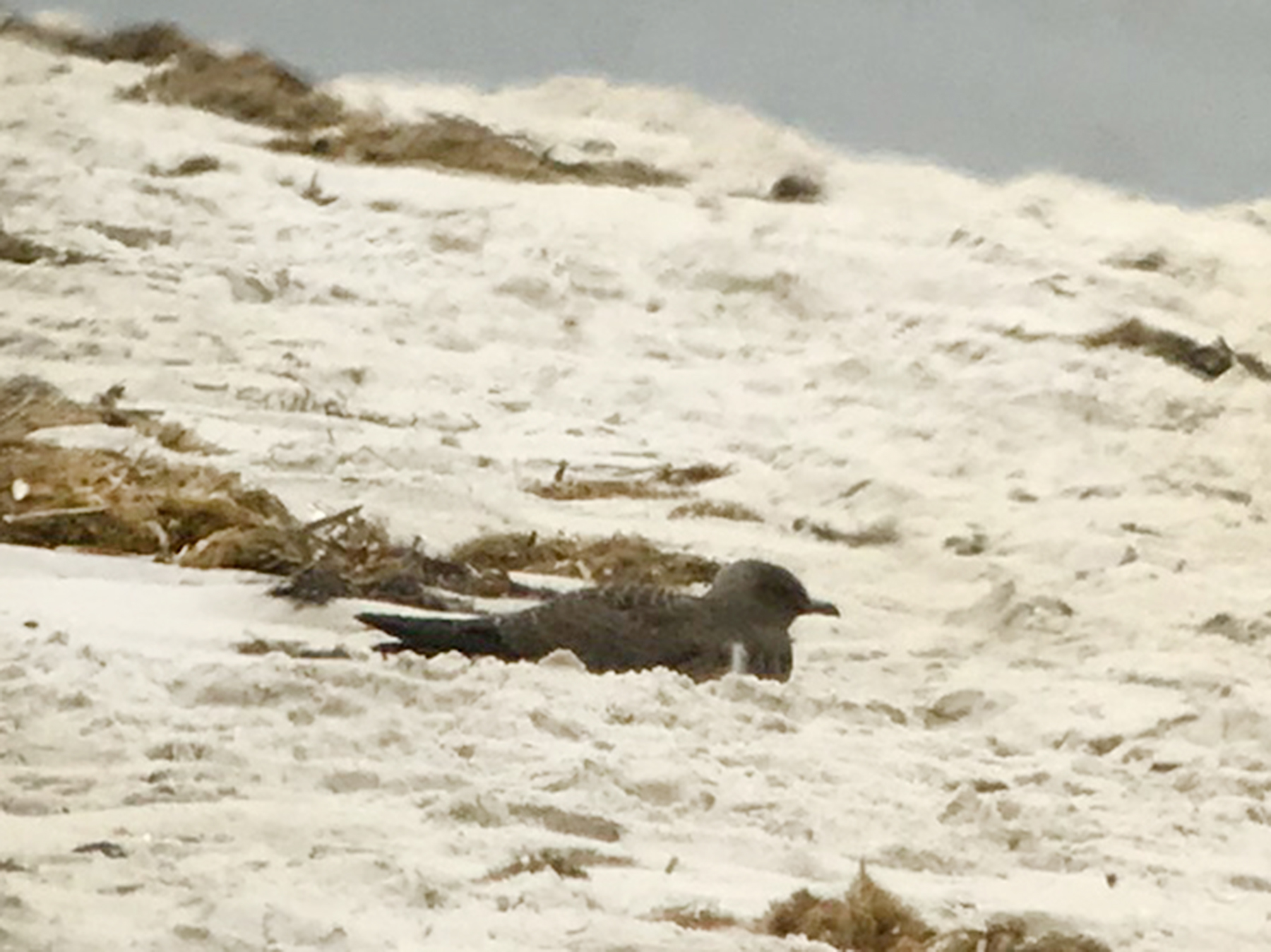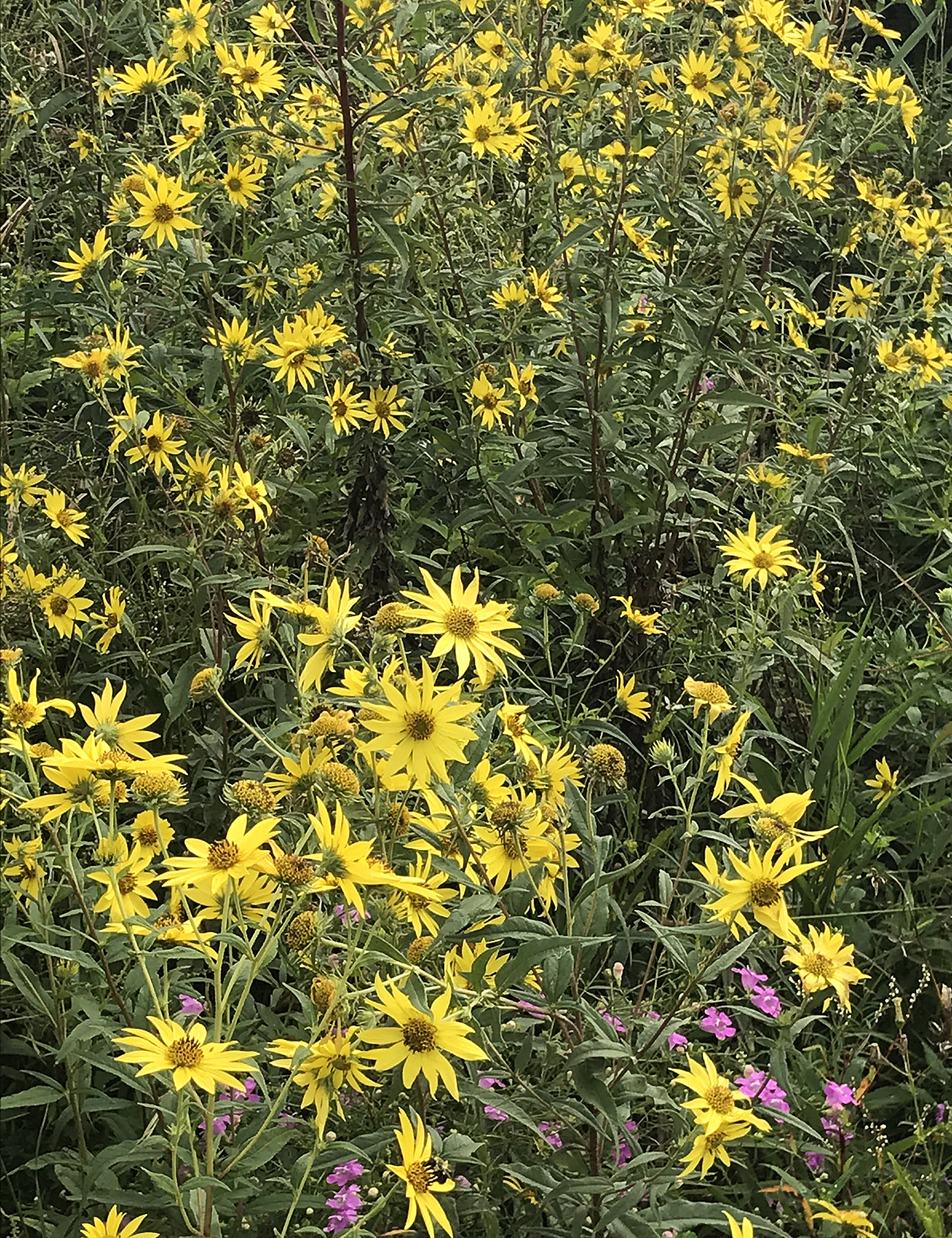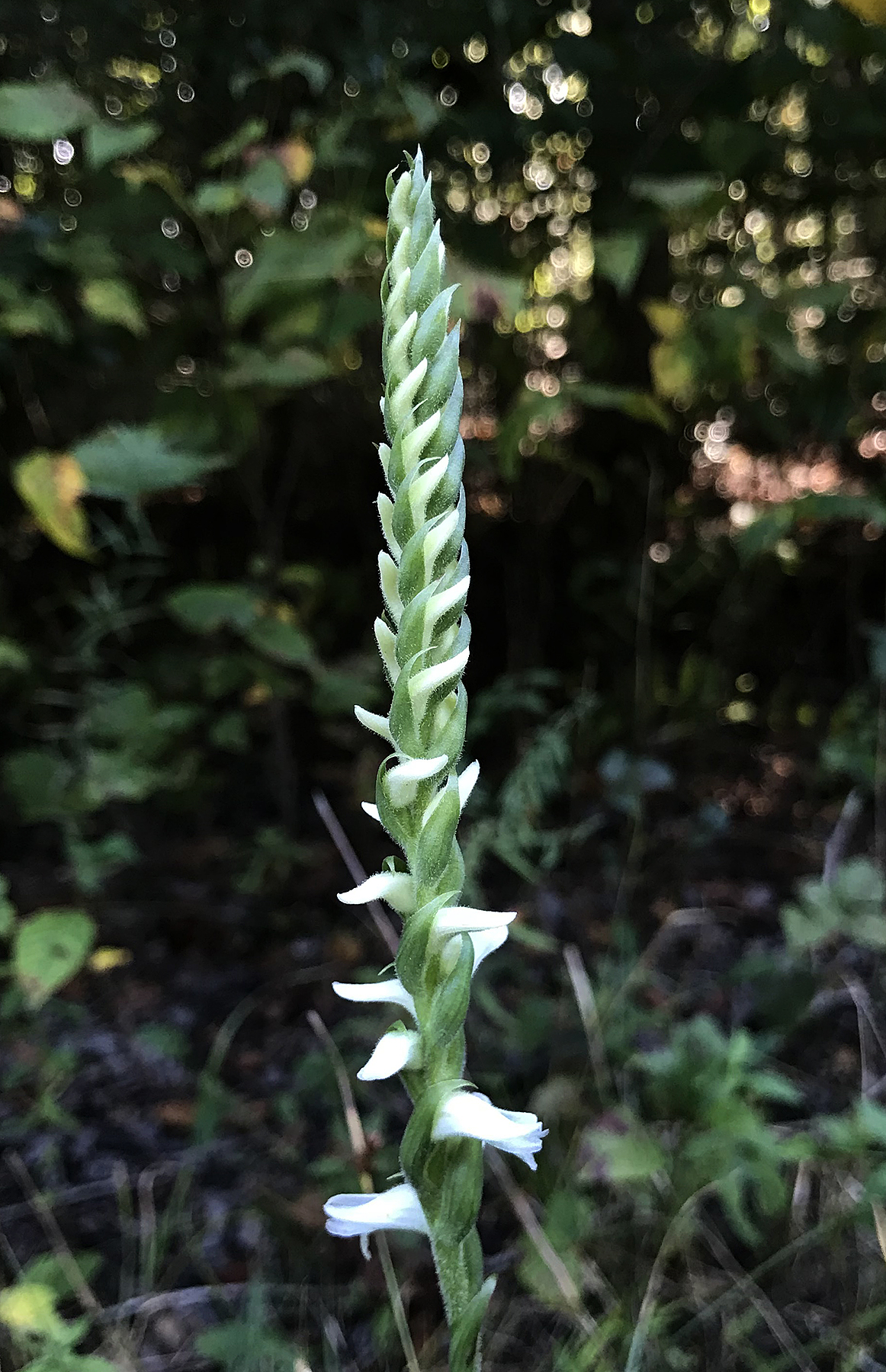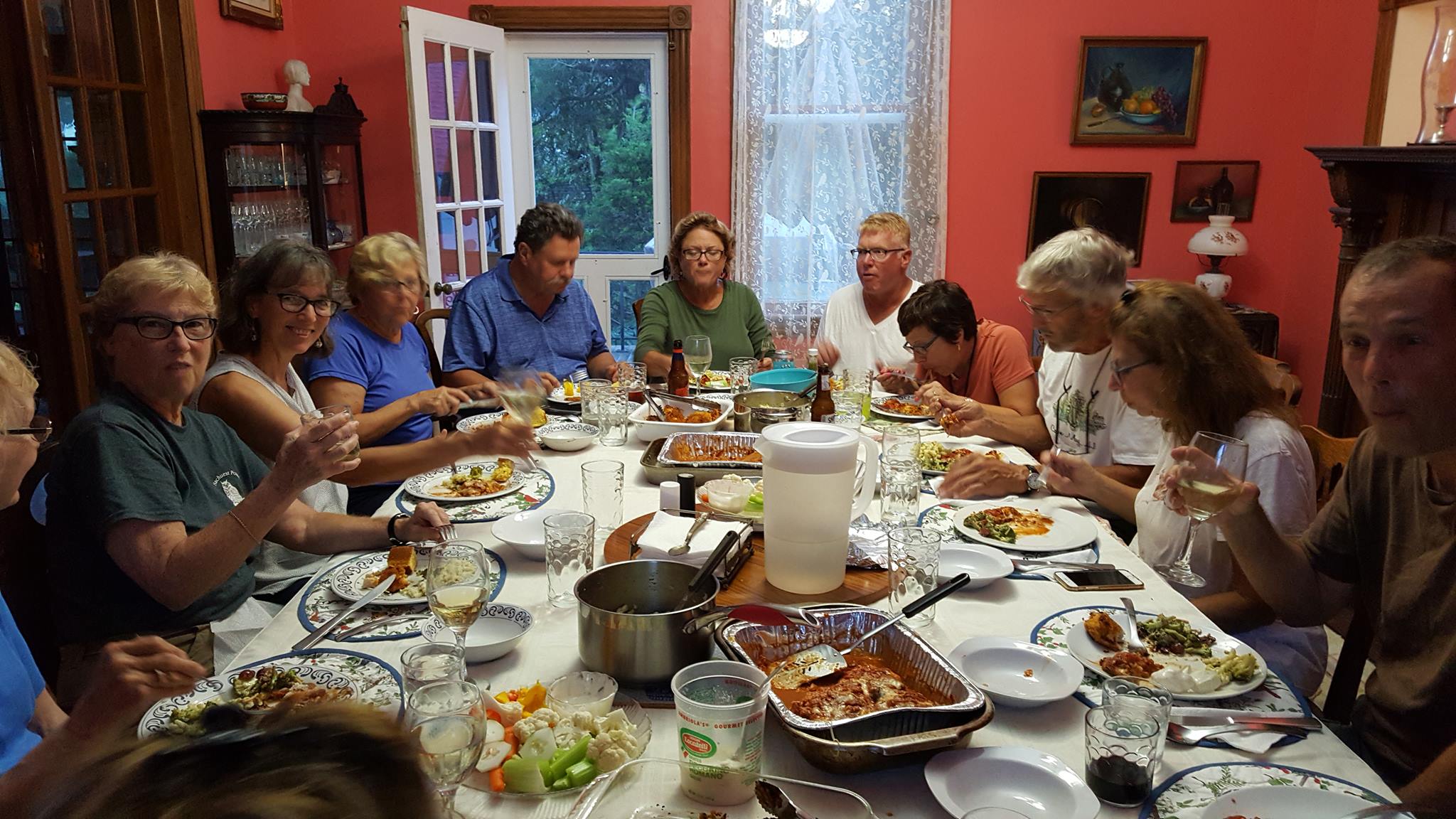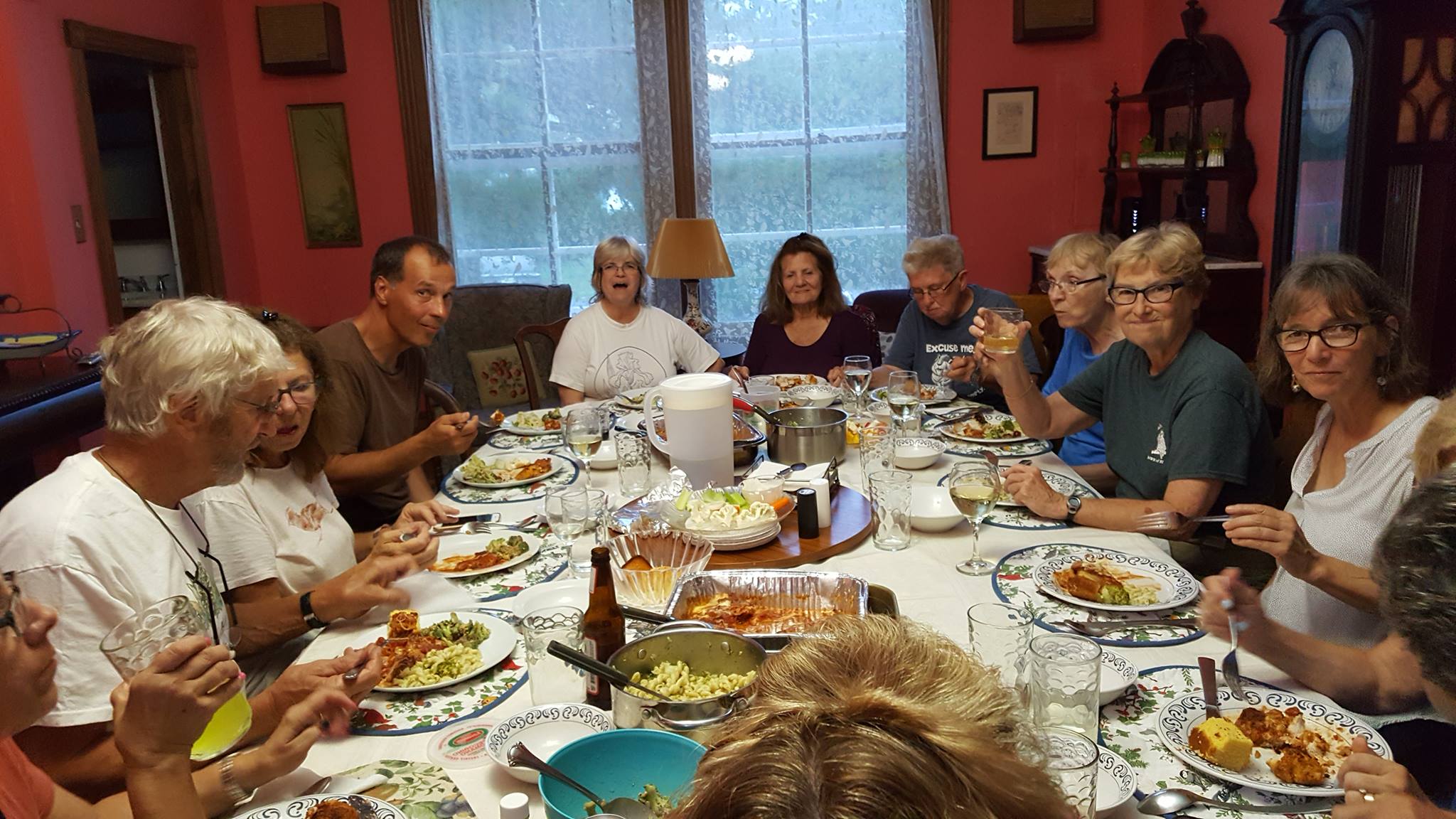I am proud to be a member of the Southern Ocean Birding Group. There are many advantages to the group: friendly birders, a super collection of presentations throughout the year, hosting the Tuckerton Christmas Bird Count, sponsoring yearly cleanups of Great Bay Blvd WMA, and providing scholarships to local college-bound environmental students. Another big advantage to being an SOBG member is that the group rents a house in Cape May for four nights each fall. And fall in Cape May is the nearest thing to birding heaven here in NJ. Even though we live an average of two hours north of Cape May, it is entirely different when you wake up right in the middle of the excitement.
This year we decided to arrive a few weeks earlier than our typical October stay, and it was interesting to note the differences in the birds this year compared with what we have seen for the past few years. There are so many good places to bird in Cape May that even during a five-day stay we didn’t have time to cover them all. One of the highlights each year is spending a few hours at the Cape May Hawk Watch, one of the premier hawk watch sites in the world. Mid-October here presents a nice mix of raptors dominated by Sharp-shinned and Coopers Hawks, while on this trip the story was falcons. Merlins and American Kestrels were more common than accipitors on this trip.
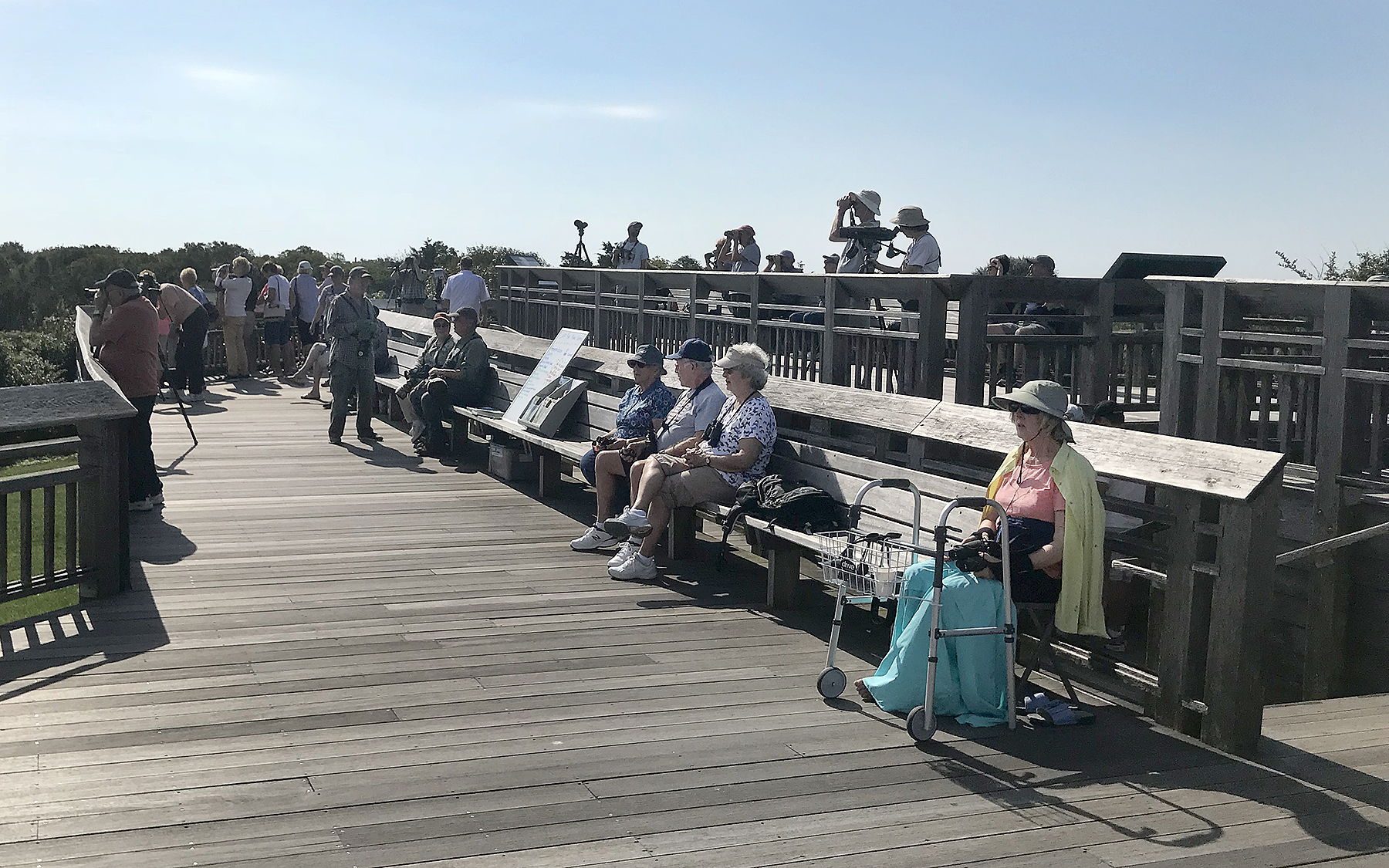
There’s plenty of room on the Hawk Watch, with sufficient benches to relax, a professional hawk counter highlighting interesting birds, naturalists to answer questions, and Swarovski scopes to view birds.
Another highlight each year is visiting Higbee Beach WMA to observe the morning flight phenomenon, where warblers and other migrants that arrived overnight traverse just above the treetops, heading northward to avoid a long flight over Delaware Bay. Our morning at Higbee was one of the most productive of the trip, highlighted by a surprising Clay-colored Sparrow and an immature Red-headed Woodpecker that were found within 15 minutes of each other. The Clay-colored Sparrow was only the third reported in NJ so far this year, and Red-headed Woodpecker is not very common in Cape May. It was interesting to watch the Red-headed Woodpecker noisily protect ‘its trees’ from the numerous Northern Flickers that were migrating through. Add in birds like Philadelphia Vireo, Northern Waterthrush, Swainson’s Thrush, and Canada Warbler and you have the recipe for a terrific morning.
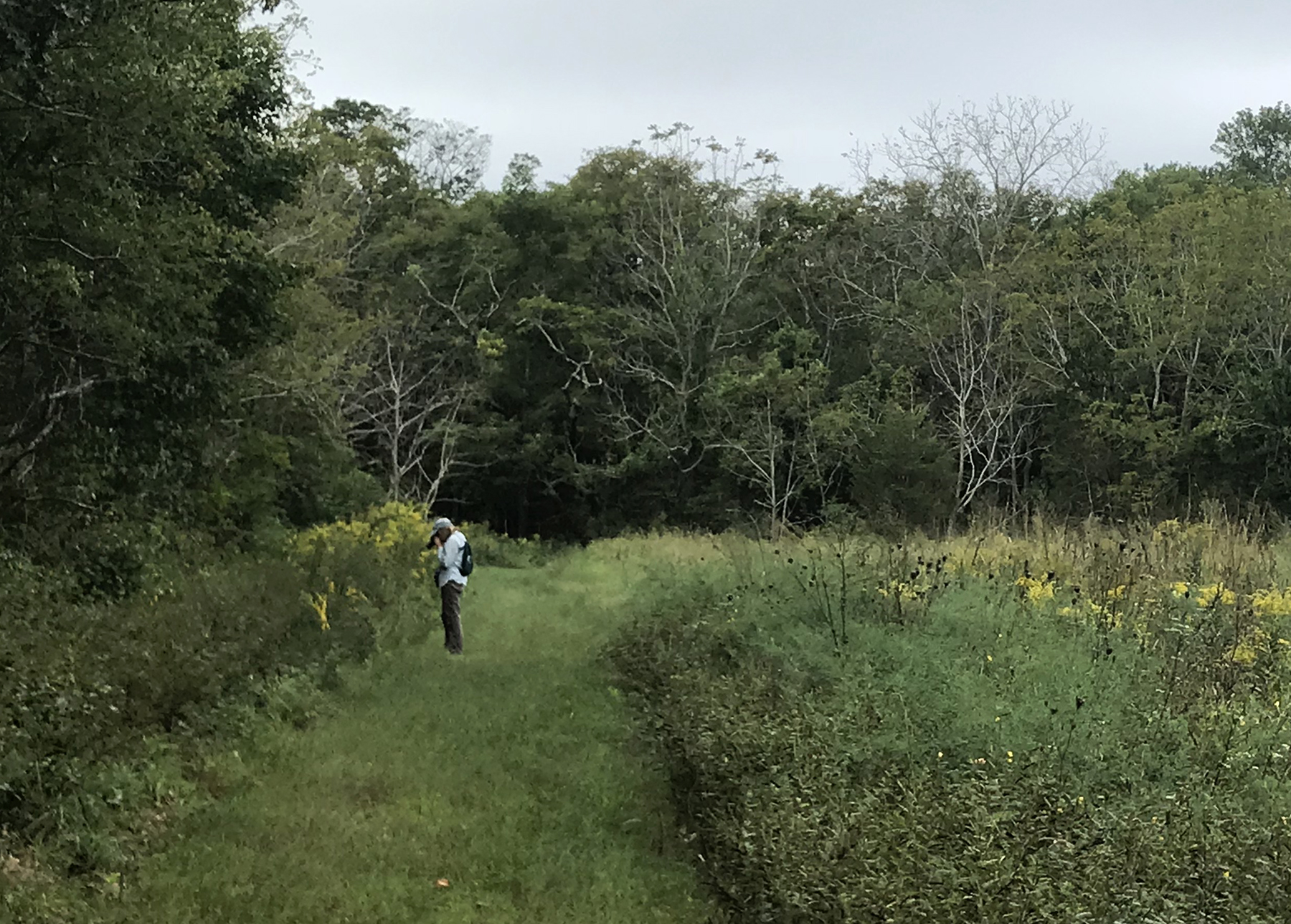
The fields and mowed paths of Higbees, combined with birds moving through the treetops and raptors patrolling the skies, provided hours of productive birding.
The day that we arrived at the house, a text alert reported that activity was strong around Lake Lily, especially on the north and western sides. This was great news, since our house is on the western shore of Lake Lily. And indeed, it was quite productive this year. In past years, because we usually arrive in mid-October, most warblers have already passed through, with the vast majority that remained being Yellow-rumped Warbler. This year we had a greater diversity of warblers, with Blackpolls being the most common, followed by Northern Parulas, American Redstarts, and Black-and-white Warblers. In previous years, sightings of Cape May Warblers were rare for us, while this year they were not uncommon. (yay!) Overall, the group spotted 18 species of warblers on this trip, and somewhat refreshingly, we didn’t see a single Yellow-rumped Warbler, highlighting the advantage of visiting here at a different time of year.
One problem with renting this house in Cape May is that it is tough to stop birding. On most days we would start birding when birds stopped becoming featureless sillhouettes around 7AM, return back to the house around noon for lunch and rest, and while trying to eat lunch on the porch (always with binoculars within an arm’s reach away!) finding that we were being distracted by nearby activity. Red-breasted Nuthatches squeaked from the nearby trees. A cooperative Wilson’s Warbler stayed in a holly tree just alongside our porch for an entire day. And one day Jeanine accidentally flushed a Mourning Dove from the front pine. A Mourning Dove sighting is not unusual, but this bird returned back to nearly the same location shortly afterward. Closer inspection revealed a nest with two chicks on it that provided my first sighting of a Mourning Dove nest. It’s amazing that such a common bird avoided detection of its nest for so long. In fact, we were there for three days before we noticed the nest just a few feet from our front porch.
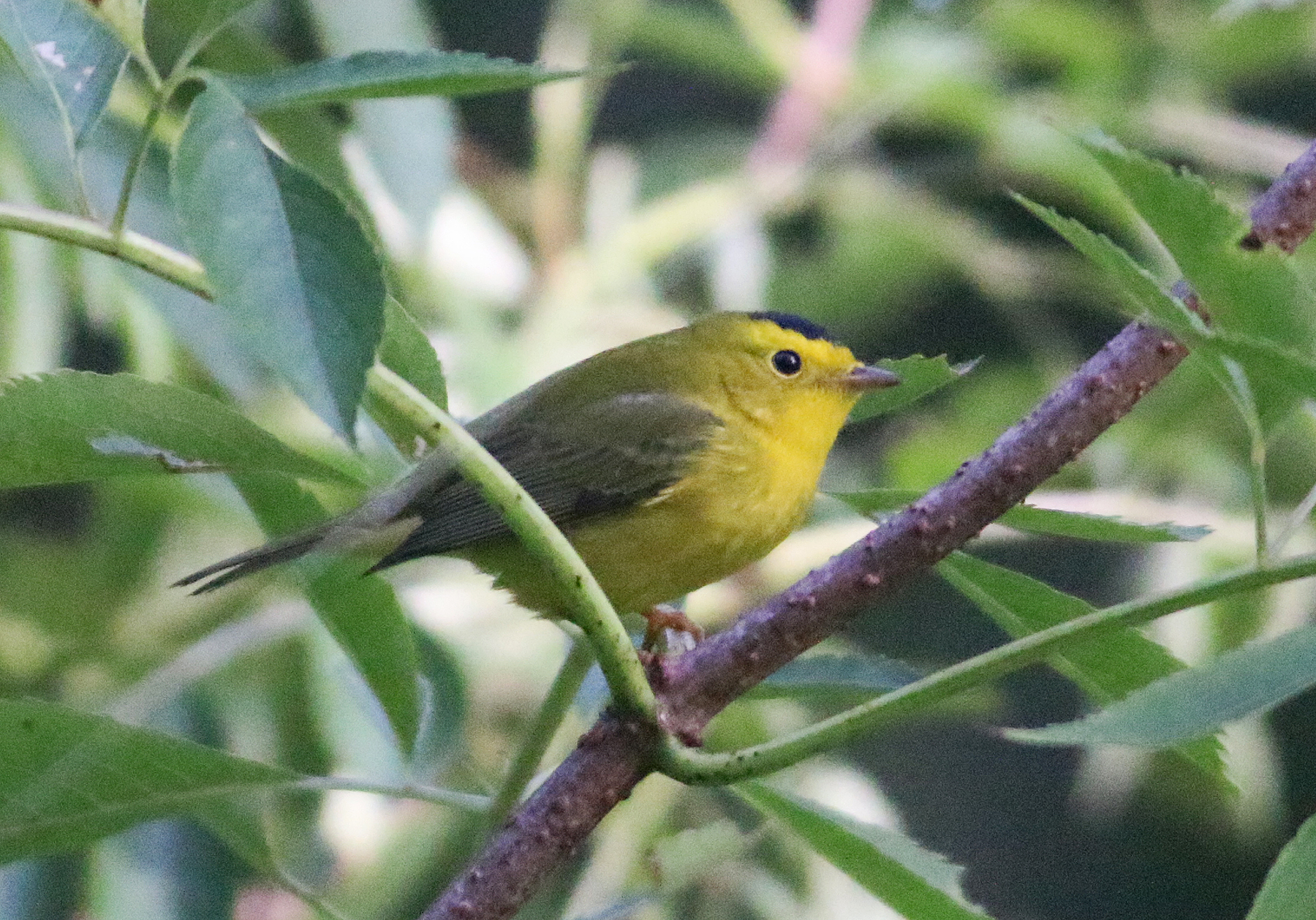
Wilson’s Warblers were seen at the CMBO Northwood Center and in a holly tree next to our front porch.

Mourning Dove adult with one of its chicks on the well-hidden nest just a few feet from our front porch.
This year’s trip included two remarkable episodes that were detailed in other blog entries. One was the capture of a Yellow-green Vireo in the banding nets at the Meadows, allowing us to view this first-for-NJ species up close. You can read more about it here. The second episode was a sighting of a Parasitic Jaeger on land off of the Coral Ave. viewing platform. You can read about that experience here.
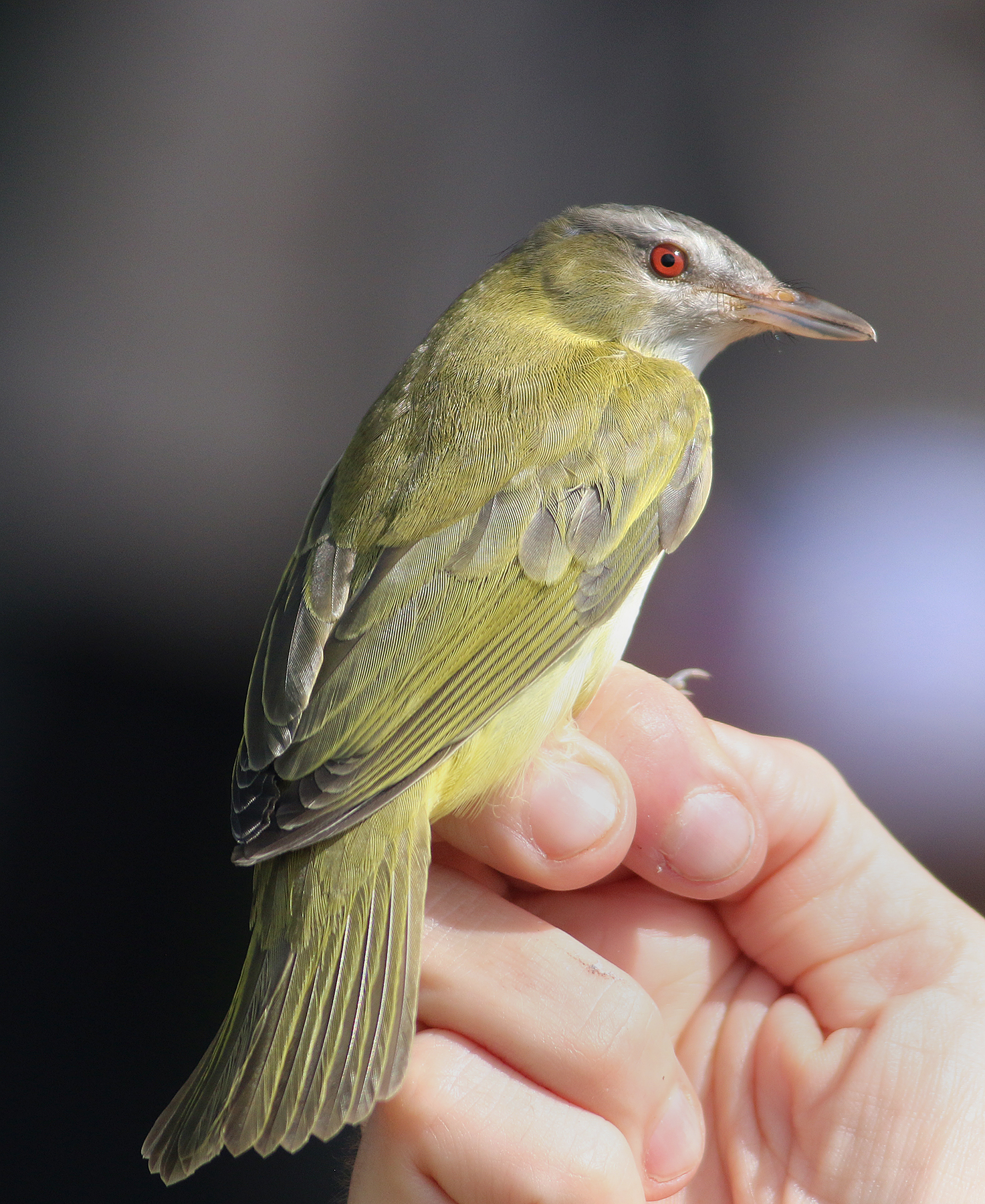
New Jersey’s first record of Yellow-green Vireo, captured in a banding net and released at the Cape May Meadows.
Cape May in fall is much more than birds. Wildflowers are still in bloom, butterflies are migrating, and dragonflies are in the air. Here’s a sample of some of our non-bird distractions.
Another highlight of any SOBG outing is food, and we had our share of day visitors and great home-cooked meals. One reason for renting this house is the spacious dinner table, which held fifteen participants one night, including dinner guests Kevin Karlson and Dale Rosselet. Good times.
I already am looking forward to returning back next year.

